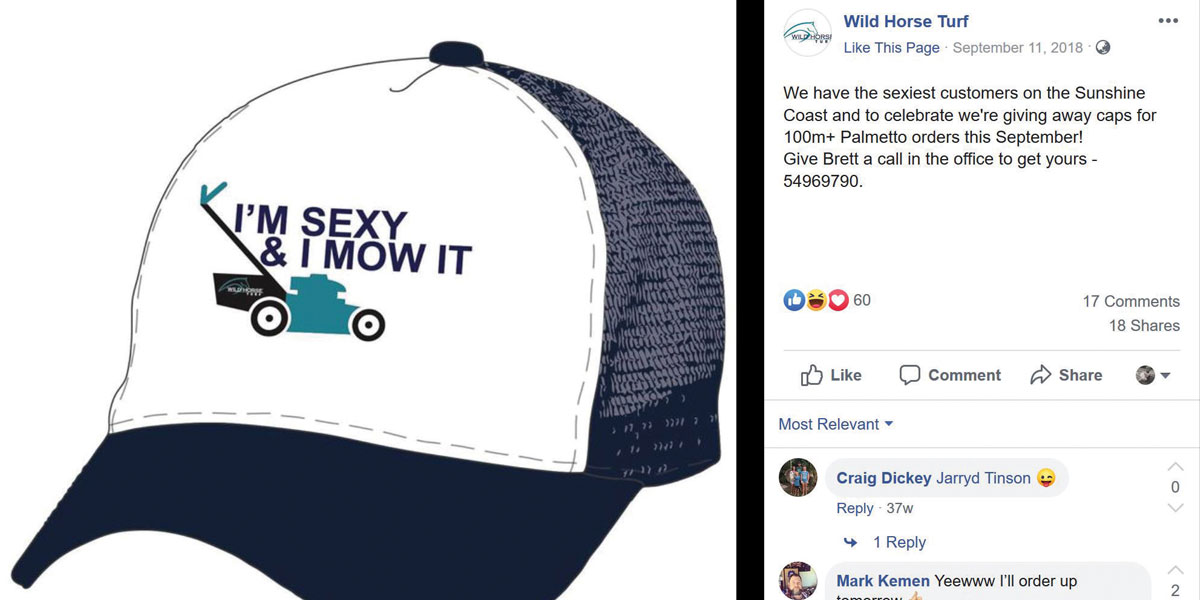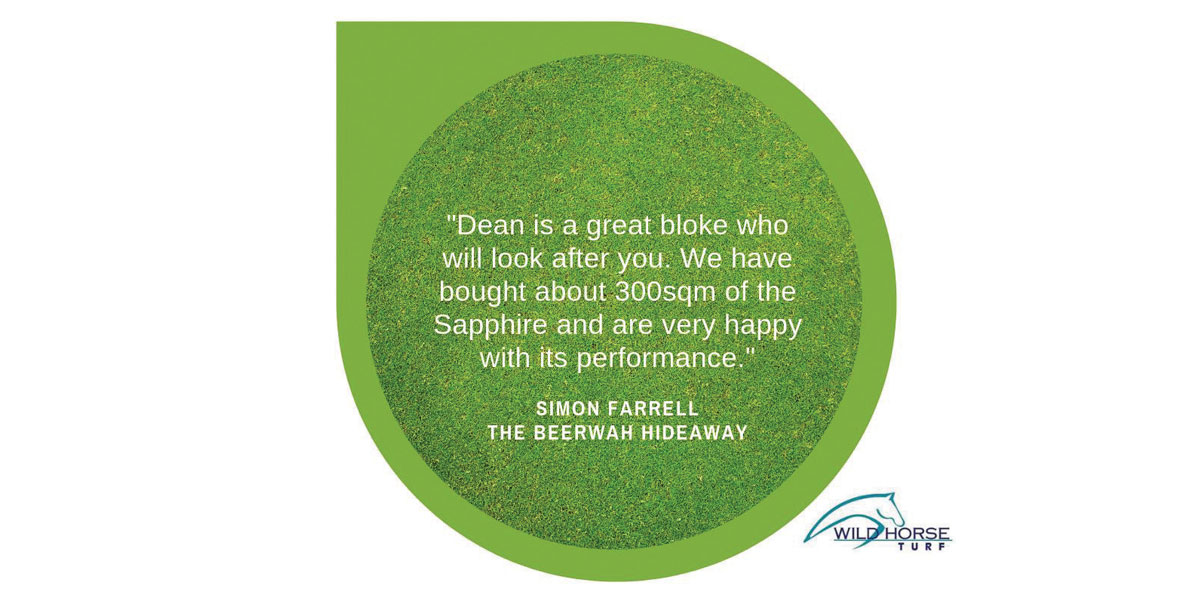Above: Facebook post from Abulk Turf.
Word of mouth is still the most powerful form of advertising, but half of it now takes place on social media through recommendations and reviews. How can you tap into this market? Sandra Godwin talks to two turf growers who share some of their secrets for making the most of Facebook.
It’s been a busy six months since David and Jessica Micallef took over Abulk Turf at Windsor, north west of Sydney. Even so, Jessica has been actively building an online community of existing and potential customers and increasing awareness of the benefits of turf as well as the varieties and services offered by the business.
Rather than trying to be across a myriad of networks, Jessica has chosen to focus her initial efforts on Facebook.
Her strategy is to post photos at least twice a week, choosing topics that appeal to consumers and tell a story they can relate to, or answer a question before it’s asked. Subjects include children – sons Thomas, Joel and Justin are no strangers to the camera – trucks loaded with turf and information about the variety and where it’s headed, and posts shared from the myhomeTURF Facebook page.
“Before I got into this industry, I liked to see before and afters, so now I try to get our layers to take before and after photos,” Jessica said. “We also want posts to be relevant to the seasons, because during the year everything changes. We’re trying to show people that grass isn’t just grass. There’s a lot more to it and some people are really interested in that.”
Jessica said likes and shares weren’t a true measure of a Facebook post’s success.
“Even if no one likes it or comments on it, it’s that people are constantly seeing your name that’s really important,” she said. “And it helps get the conversation going.”
Jessica’s three tips:
1. Post regularly – we’re creatures of habit and will look out for what’s next as well as what’s new.
2. Include photos to boost engagement.
3. Make sure posts are relevant to the season.
At the other end of the spectrum are Wild Horse Turf owners Dean and Amanda Smyth, who have operated their Glasshouse Mountains turf farm for 15 years.
Amanda is the first to admit she’s more experienced with social media than many farmers.
She started a blog called Cooker and a Looker in 2012 when daughters Harriet and Lillian were “at the age when tractors and children don’t mix”, writing about food, family and farm life.
Amanda’s main aim for the business is to stop people scrolling on their phone with an eye-catching post that includes a striking photo or, even better still, a short video.
She recommends creating posts in batches, based on a theme, such as Mowing Week, and reusing chunks of website content, including Frequently Asked Questions.
“Once you’ve compiled six weeks’ worth of Facebook posts you can repeat those, because they’ll be of use to future customers or people who weren’t necessarily in the market for buying turf at the time,” she said.

Above: Hat giveaway promotion from Wild Horse Turf.
“We produced some hats that say, “I’m sexy and I mow it” and the initial post got a lot of engagement because it appealed not only to people who were buying new turf but also people who loved lawns.
“People also love seeing the behind-the-scenes of a farm. They love learning that they’re not dealing with a big company like Bunnings, but the mum and dad with a family.”
Once growers become more familiar with Facebook, they can use its analytics features to find out when posts are viewed and what devices are used.
“If you know everyone’s finished dinner by 8pm and they’re sitting on the couch and scrolling through their phones during the ads, that’s a good time to post because people will be more likely to see your post and engage with it,” Amanda said.
Amanda’s three tips:
1. Know your customer – women are heavily involved in the buying process, so avoid anything sexist.
2. Test the performance of posts published at different times of the day.
3. Post videos – they don’t need to be long, complicated or professionally made: 15 to 30 seconds is enough.

Above: Customer testimonial post from Wild Horse Turf.
Tips for creating Facebook content
1. Offer value
Combine a timely mix of content about your business (product tips, sales events, behind-the-scenes items and photos) with third-party content, such as links to industry blogs and forums. This demonstrates your expertise and builds your credibility as a resource of value to users.
2. Be strategic with images
Don’t post stand-alone photos of your products or services. Show them being used by happy, satisfied customers. Ask for testimonials and make it easy for fans to tag photos of their own, wherever they use your product or service, and share these as well.
3. Keep posts short and regular
Short and sweet is best in this age of limited attention spans. Posts of less than 300 characters are easier to read on a phone screen with minimal scrolling. Recent Australian research suggests that Facebook users check their page more than 25 times per week. Some guides recommend posting at least once a day, but the core principles are to post when you have interesting content, and to judge how often your audience wants to hear from you.
4. Focus on engagement
Stimulate users to get involved with your business by posting content that is humorous, inspirational or encourages curiosity by asking questions and offering polls that invite a response. When people do respond, keep the conversation going with comments of your own.
5. Connect like a friend, not a business
Facebook is all about the personal experience, so avoid the hard sell. Whoever manages your page must be able to write in a voice that sounds real and likeable, using a style that suits your business. Post news and updates in a simple, informal and fun way and include links back to your website.
6. Build your digital presence
Social networks are excellent content distributors. Search engines such as Google use social media shares to determine the usefulness of content to an audience, which can influence search rankings.
Sources: Business Queensland, Business Victoria, Facebook, Forbes, Hubspot

